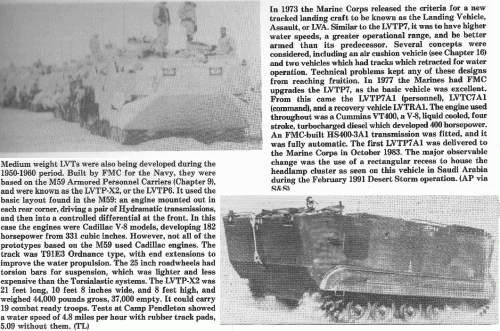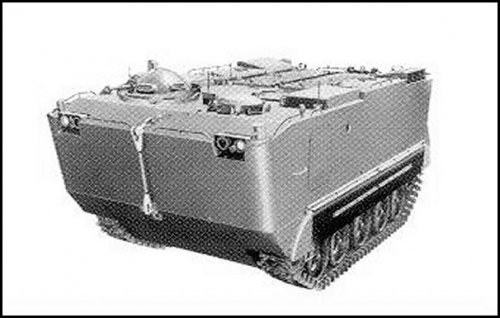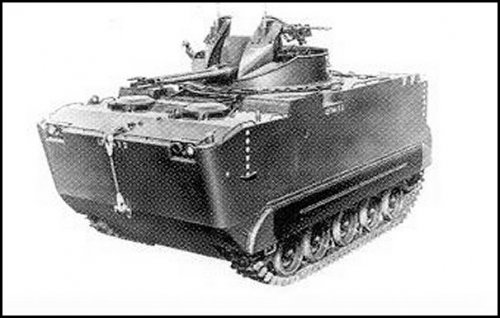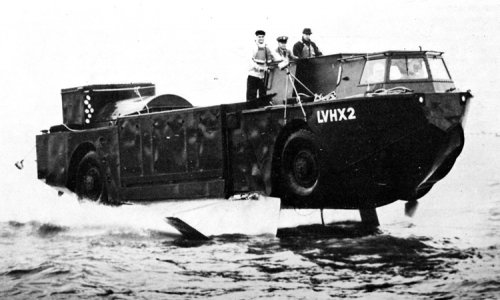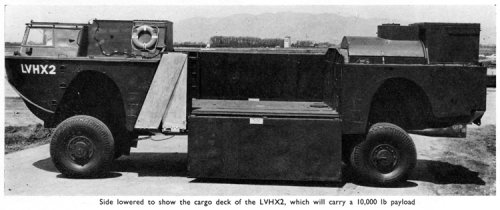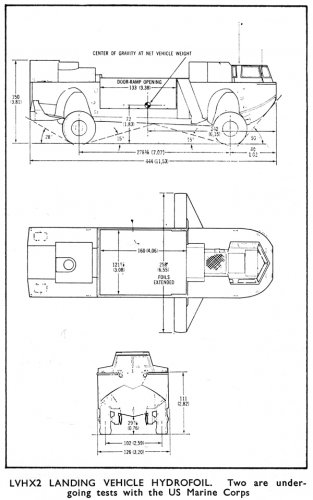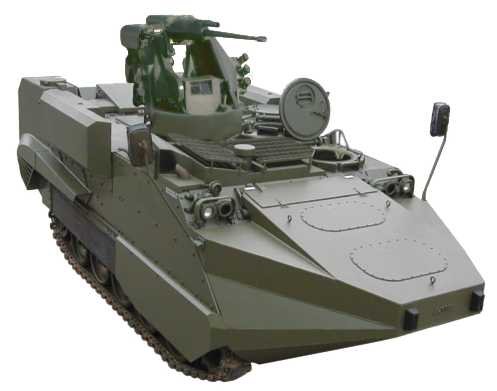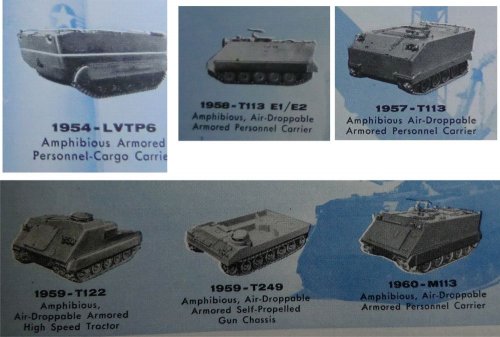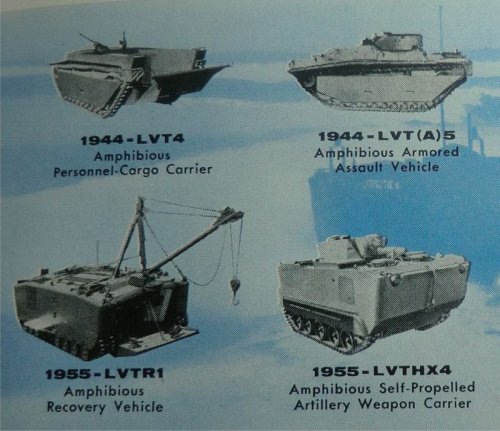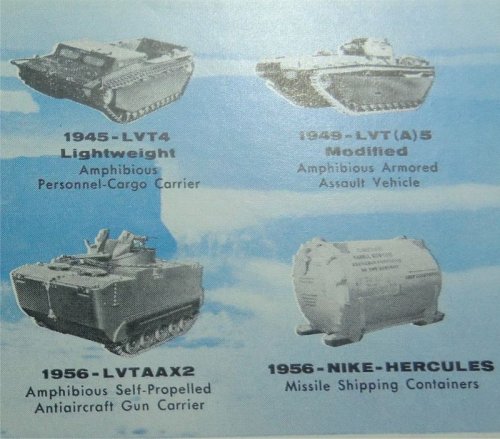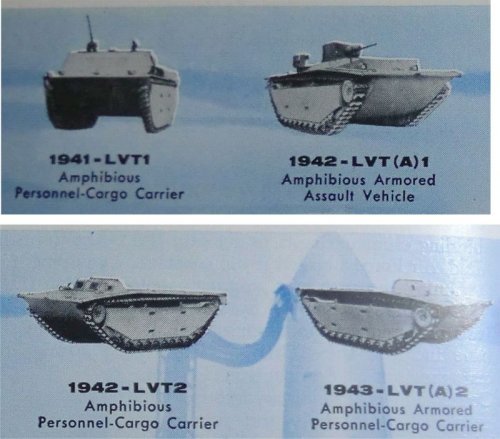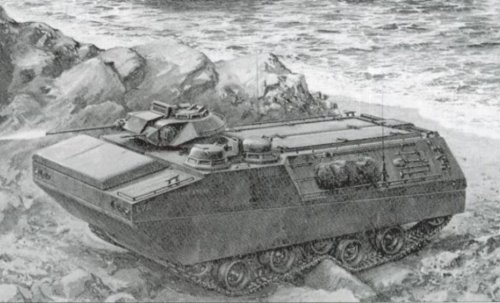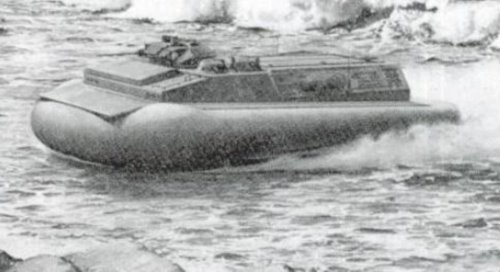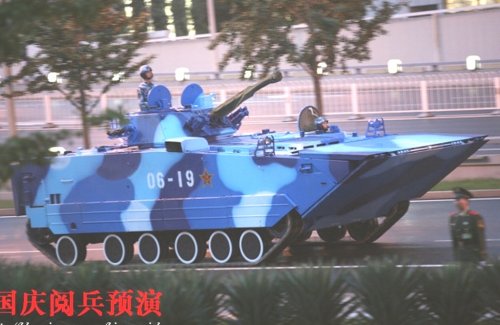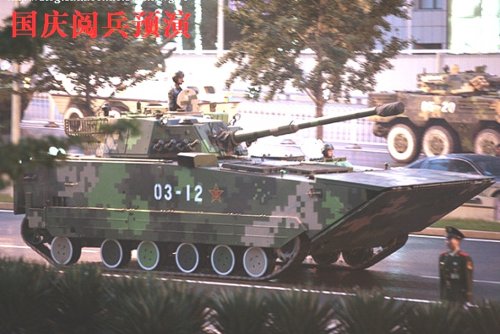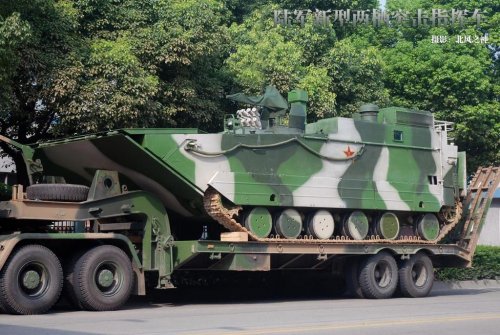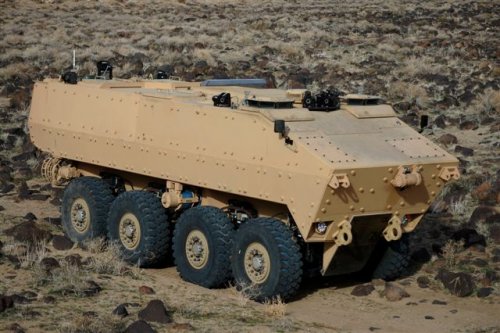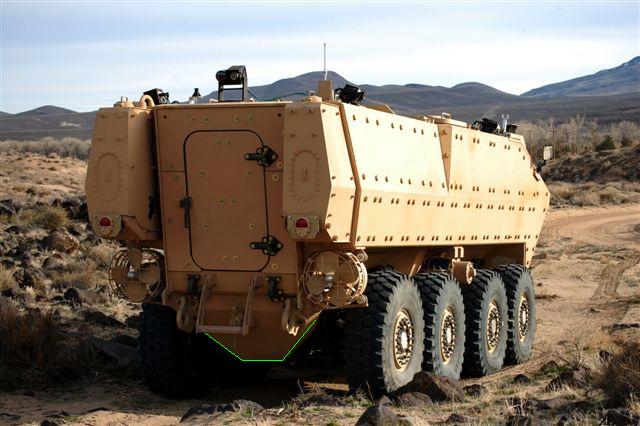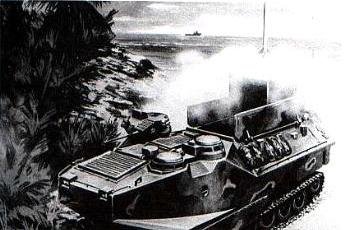A
AGRA
Guest
I’m searching for any information relating to three unsuccessful efforts to develop new amphibious landing craft for the US Marine Corps. In the 1950s there was a LVTP6 developed from the M59 APC that was trialed but never ordered into production. In the 1970s a LVA (Landing Vehicle, Assault) high water speed amtrac with a rotary engine and a backup low speed LVT (Landing Vehicle, Tracked) both with 25mm chainguns.
If anyone has any information or links about these projects please post them here.
If anyone has any information or links about these projects please post them here.

